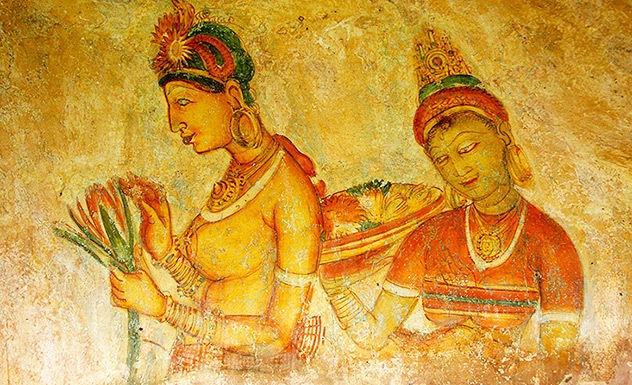Discovering Sri Lanka’s Rich Cultural Heritage- A Journey Through Time and Tradition
- Windy x
- Aug 8
- 4 min read

Sri Lanka is a small island with a vast soul. Its cultural heritage spans more than 2,500 years — a rich mosaic of ancient kingdoms, spiritual wisdom, village rituals, art forms, and colonial influences. Beyond its ruins and relics, the island’s heritage lives in its people, its festivals, its lakes and temples, and the timeless rhythm of daily life.
From the sacred cities of Anuradhapura and Kandy to hidden village temples by tranquil lakes, Sri Lanka’s culture is deeply rooted in both grandeur and simplicity — always tied to nature, faith, and community.
Here’s a guide to the places, traditions, and sacred landscapes that define the island’s enduring cultural legacy.
Anuradhapura – The Sacred City of Lakes and Kings

At the heart of Sri Lanka’s ancient civilization lies Anuradhapura, the first royal capital, founded in the 4th century BCE. This city was not only a center of governance but a hub of Buddhist philosophy, irrigation mastery, and community life.
Key Cultural Significance:

Sri Maha Bodhi Tree – a living symbol of spiritual continuity.
Ruwanwelisaya, Thuparamaya, and Abhayagiri – colossal stupas of devotion.
Kuttam Pokuna (Twin Ponds) – ancient bathing pools demonstrating advanced engineering.
Cultural Note: Anuradhapura’s many village temples and irrigation lakes (wewas) like Tissa Wewa and Nuwara Wewa were central to agrarian life and religious practices — where harvest blessings, full moon rituals, and processions still occur.
Polonnaruwa – Echoes of Empire and Artistry

Polonnaruwa represents a golden age of Sinhala craftsmanship and urban design, thriving in the 11th–13th centuries. The city was famed for its harmony of aesthetics and engineering.
Must-See Sites:

Gal Vihara – stunning rock-cut Buddha statues.
Parakrama Samudra – a massive man-made lake still supporting local agriculture.
Royal Council Chambers and Quadrangle – symbolic of a strong, centralized rule.
Living Traditions: Villages around Polonnaruwa still honor seasonal rituals near tank reservoirs (wewas), where temple ceremonies, harvest offerings, and healing chants are part of daily life.
Sigiriya – Palace in the Sky, Garden on Earth

Sigiriya, the 5th-century fortress of King Kasyapa, reflects the fusion of ambition, aesthetics, and spirituality. The site combines symmetrical water gardens, ancient graffiti, and frescoes of "Cloud Maidens."

Cultural Layer: Sigiriya also holds meaning beyond its royal legacy — believed to have earlier served as a Buddhist monastery, and today it remains a site of pilgrimage and artistic inspiration.
Dambulla – Cave Temples of Living Faith

The Dambulla Cave Temple, or Golden Rock Temple, is one of Sri Lanka’s best-preserved sacred sites, with over 150 statues and vivid murals across five caves.

Why it Endures:
Continually worshipped since the 1st century BCE.
Features Buddhist, Hindu, and royal figures, showing centuries of evolving belief.
The caves overlook Kandalama Lake, where local villagers gather for religious bathing and water blessings before temple functions.
Kandy – The Heartbeat of Sinhala Tradition

Kandy, nestled in the hills, is not just home to the Temple of the Tooth Relic, but to the country’s living traditions — dance, music, masks, and ritual art.

Key Cultural Elements:
Kandyan Dance and Ves Natuma – performed during temple festivals and healing rituals.
Traditional masks – carved for exorcism rites and ceremonial theatre.
Lake Kandy – built by King Sri Wickrama Rajasinghe, it’s central to spiritual and civic life.

Event Highlight: The Esala Perahera is the pinnacle of cultural expression — featuring elephants, torch-bearers, dancers, and drummers parading in honor of the Sacred Tooth.
Mihintale – The Dawn of Buddhism

Located near Anuradhapura, Mihintale is where Buddhism was first introduced to Sri Lanka in 247 BCE. Its forested hilltop shrines, stupas, and caves attract pilgrims especially during Poson Poya.
Spiritual Elements:
Aradhana Gala – where Arahat Mahinda preached.
Meditation paths and hermit caves – still used by monks and seekers.
Many nearby villages maintain ritual observances, cooking alms (dana), lighting oil lamps, and hosting drum-led processions by the lakes on full moon nights.
Galle Fort – Colonial Crossroads of Culture

On the southern coast, Galle Fort is a living UNESCO heritage site that reflects Portuguese, Dutch, and British influences, blended with Sri Lankan traditions.

Why It Matters:
Colonial-era architecture alongside mosques, Buddhist temples, and churches.
Home to local artisans, lace-makers, and cultural cafés.
The fort also hosts the Galle Literary Festival, where ancient walls echo with modern creativity and global dialogue.
Mask Making, Ritual Drama, and Folk Traditions

Sri Lanka’s culture is not confined to cities. Across rural towns and coastal villages, ritual traditions and crafts flourish.
Ambalangoda is renowned for Kolam and Sanni masks, used in healing rituals and folk theatre.
Traditional performances like "Devil Dance" are held to ward off illness, invoke blessings, or mark milestones.
Temple festivals in villages involve drumming, coconut-breaking rituals, and torchlit processions around sacred trees or lakes.
These customs reveal a culture where belief, nature, and community are intertwined.
Let the Island’s Living Legacy Inspire You..
Discovering Sri Lanka’s cultural heritage is more than visiting ancient sites — it’s about witnessing a living story. It’s the sound of temple bells echoing across lakes at dawn, the scent of jasmine garlands during a Perahera, the rhythmic steps of a masked dancer, and the quiet reverence of pilgrims under centuries-old trees.
From grand stone cities to intimate lakeside rituals, Sri Lanka’s culture is alive — shaped by history, guarded by tradition, and celebrated every day.
Whether you wander through ancient capitals, share a meal with a village elder, or witness a torchlit procession by moonlight, you become part of a heritage that continues to evolve — one timeless step at a time.









Comments